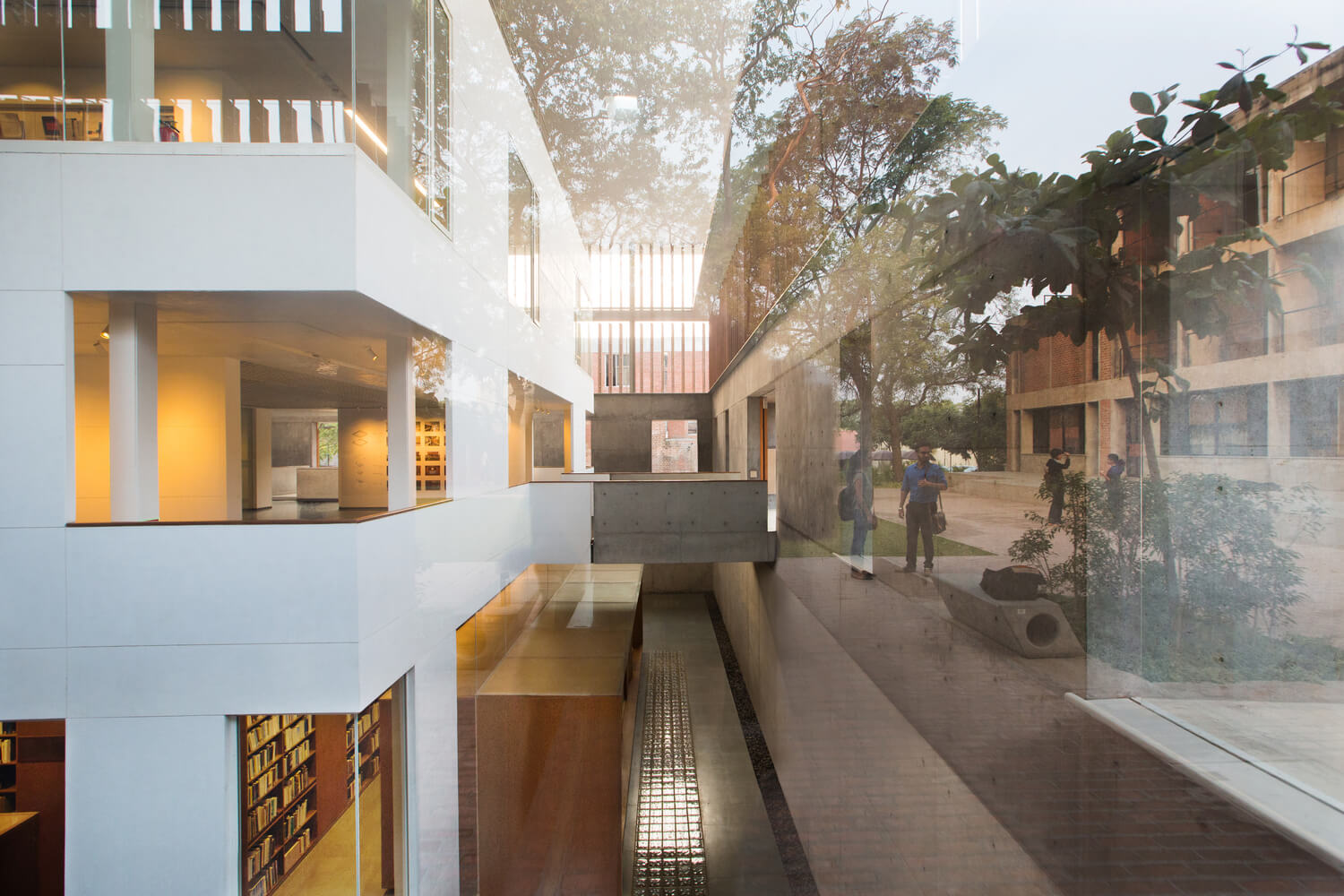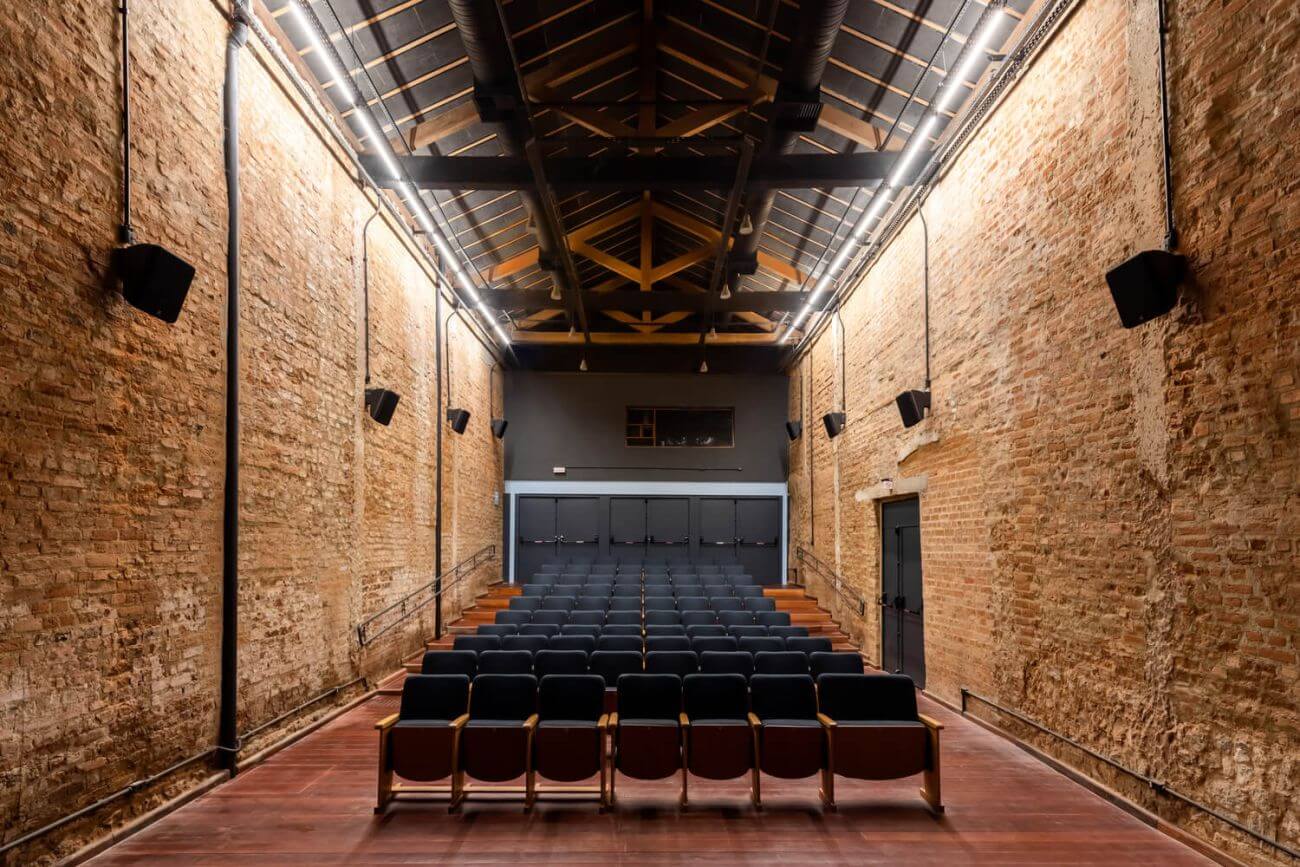DELIVERABLES PUBLISHED BY THE PROJECT
FP1 MOTIONAL D1.2
This document shows how FA1-MOTIONAL is addressing the Key Performance Indicators stated in the Multi Annual Workplan of the EU-Rail Work programme, the Performance Indicators to be fulfilled within the project and the Impact the technical developments will have on a variety of topics of our lives. The Key Performance Indicators (KPIs) represent the overall goals of the work programme and are to be reached by 2031. A credible pathway towards these goals is to provide and implement Performance indicators (PIs), which are related to the overall goals, but to be reached at the end of the FA1-MOTIONAL project by 2026. To measure the KPIs and PIs, we defined a baseline for 2022 whenever possible and relevant by using e.g., reports on rail statistics (e.g., EUROSTAT [1], PRIME [2]), this baseline will later be used to measure the progress of our planned technical developments. Some of our KPIs and PIs do not require a baseline but have rather absolute goals to be reached. Additionally, a clear methodology was defined, this information is needed to make the results comparable and repeatable. We selected different approaches for measuring the progress towards KPIs, PIs for our Technical Enablers and PIs for our Digital Enablers, due to their different nature of objectives. KPIs will be measured using demonstrations, simulations or expert judgement, based on the data availability and overall timeline of demonstrations stated in the EU-Rail Multi- Annual Workplan [3]. PIs for our technical enablers and digital enablers will be measured by comparing the current Technology Readiness Level to the target level stated in the Grant Agreement [27]. Our project and the successful implementation of technical and digital enablers will have a measurable impact on society and economics. We plan to quantitively assess these impacts based on all developments done in MOTIONAL. Other impacts (e.g., environmental, technological, political) will only be qualitatively assessed. The level of complexity of the developments and the numerous interdependencies within the rail system and the real world make it impossible to calculate the impacts precisely or map certain technical enablers directly to a specific impact. The results of the project can only be evaluated in a holistic approach and taken as estimation. We conclude that the selected methods and approaches are the best way forward to fulfil the objectives of our project. This document will provide the baseline of all future work concerning KPIs within MOTIONAL and also Flagship Area 1. Download
DownloadDeliverable 2.4 Demonstration Strategy
This document forms Deliverable 2.4 “Demonstration Strategy” of FP1 MOTIONAL Project. Its purpose is to present a strategy of how to set up and perform demonstrations. The strategy acts as a guideline for FP1 Motional work packages starting in December 2024 (M25) and provides templates for deliverables in the demonstration phase (M25-M43). The deliverable proposes to divide the work related to demonstrations into four phases: Specification, Implementation, Execution and Evaluation. The four phases help the demonstrating partners to structure their work. The different demonstration events required, open for people outside FP1 MOTIONAL, are also defined and described. The interaction between Workstream 1 and Workstream 2 is also presented, as well as Workstream 2’s contribution to other Flagship Projects. Download
DownloadDeliverable 2.5 Use Cases for project demonstrations
This document forms Deliverable 2.5 “Use Cases for project demonstrations” of FP1 MOTIONAL Project. It is designed to present the Use Cases proposed to be demonstrated in the MOTIONAL project. The deliverable contains 163 Use Cases (UCs) that will be demonstrated through 76 demonstrations. These demonstrations have the goal to demonstrate all technical activities within MOTIONAL Work Packages (WPs). These Use Cases reflect the project tasks, providing clear storyboards for the preparation of the planned demonstrations. The use cases will be used to demonstration preparations and should be later reflected on demonstration reports of each WP. They can be used to validate that the demonstration goals were achieved. Download
DownloadD2.2 Workplan for collaboration with other EU-RAIL Destinations
The purpose of this document is to present a Workplan for collaboration with other EU-RAIL Destinations for Flagship Project 1: MOTIONAL. The Workplan outlines the objectives, guidelines, collaboration activities, deliverables, outcomes and risk management strategies for the collaboration between Flagship Project 1 and the other participating EU-RAIL Destinations. The objectives of collaboration include improving knowledge sharing, enhancing collaboration and coordination, and increasing efficiency and effectiveness of technical enablers developed by the Flagship projects. The guidelines for collaboration address communication and coordination mechanisms, roles and responsibilities, data sharing and confidentiality, intellectual property rights, and timelines and milestones. The activities include identifying potential collaboration, joint planning and implementation of pilots, and documentation exchange. Overall, this Workplan aims to establish a successful and productive collaboration between Flagship Project 1 and the other EU-RAIL Destinations, with the aim to provide better results in all involved projects. This document was updated after the first FP1 Maturity Checkpoint, considering comments from EU-Rail and other Destinations. Download
DownloadD2.3 Use Cases for planned technical developments of the project
This document forms Deliverable 2.3 “Use Cases for planned technical developments of the project” of FP1 MOTIONAL Project. It is designed to present the new technical Use Cases proposed by the MOTIONAL project. The report also includes an analysis of data availability in prototype environments. The deliverable contains 160 Use Cases (UCs) covering all technical activities within MOTIONAL Work Packages (WPs). These Use Cases reflect the project tasks in form of a story between the actors and the MOTIONAL platforms. The use cases will be used to design the proposed solutions and later on development reports they can be used to validate that the technical developments were able to fulfil the initially defined goals. Download
DownloadD3.1 Mapping against scope_ specification of technical enablers_ high-level use cases_ high-level requirements_ high level design for demonstrators in WPs 4-9
This document constitutes the Deliverable D3.1 “Mapping against scope, specification of technical enablers, high-level use cases, high-level requirements, high-level design for demonstrators in WPs 4-9” in the framework of the Flagship Project FP1-MOTIONAL.
The objective of this deliverable is to align, prepare and deliver the high-level specifications of requirements, high-level design, and high-level use cases for the development of the technical enablers 1 to 7. The high-level specification is done in parallel with more detailed specifications from WP4, WP6 and WP8. Participants from all WPs contributed to the texts.
In the project proposal, seven technical enablers were linked to Workstream 1.1 (Planning work packages), i.e., WP4/WP5 (Integration of Planning Systems and Processes), WP6/WP7 (Decision Support and Optimization) and WP8/WP9 (Simulation and Operational feedback). Here, each of the technical enablers are described in detail, including alignment with previous results, current state of practice, assigned development needs and high-level requirements.
An extensive mapping is also a result that is presented in this deliverable. All demonstrators (that further on will be called demonstrations) in Workstream 1.1 are introduced and described, together with related use cases. There are 13 demonstrations and they are all mapped against technical enablers, TRL levels, use cases and the high-level requirements defined for each technical enabler. They are also mapped against simulation environments and frameworks to be used within WP4/WP5, WP6/WP7 and WP8/WP9. Finally, the alignment and interactions between WP4-WP9 demonstrations and other FA1 WPs, other Flagship Projects and SP Task 3 CMS/TMS and RNE are mapped. Download
DownloadD8.1 The need for future development of methods and models for capacity simulations and feedback loops between planning and operations
Deliverable D8.1 mainly focuses on methods and models for capacity simulation including feedback loops between planning and operation. The aim is to improve current practice and to extend the scope of capacity studies with the application of models which enable capacity-impact studies of, in ER FP2 R2DATO, new developed technologies specifically: ETCS HTD (previous HL3), ATO/C-DAS linkage to ETCS and next generation brakes. Also, the aim is to identify best practices and needs for further developments of these methods and the modelling configuration of the abovementioned innovations. This document sets the baseline for the development of methods and models to test these in a simulation environment. After being tested on feasibility they will be prepared for capacity studies to identify the future potential of the above-mentioned innovations, which will be executed by WP 9. Results of WP9 will be disseminated to R2DATO, where they are part of the new technology's impact assessment.
A conclusion from the mapping of existing tools among partners is that there are several capacity simulation tools available with developed functionality for simulation of a transport plan and also for simulation of ETCS L2. However, developments are needed to simulate the capacity effect of new digital technologies like ETCS HTD, next generation brakes, C-DAS/ATO, driver behaviour and TMS functionality, including the train path envelope and the concept of TMS steering of ATO. This also applies for improved feedback loops including crew scheduling and large networks.
A general methodology is derived for the verification, calibration and validation of railway simulation models using literature review and practical examples. However, an integral description with application of verification, calibration and validation processes for railway simulation tools is missing.
In the deliverable, an overview of feedback loops between operations and planning is given and development needs are defined. It can be concluded that feedback loops between operations and planning are essential to improve railway planning and that timetable analysis and simulation can give useful outputs, as a complement to operational performance. In order to achieve more solid and reliable models for planning and simulation; data improvement by continuous feedback of historical information available for analysis is needed. There are also other areas where methodological development is needed, typically related to specific cases where there are missing functionalities today, i.e. simulation with TMS.
The next part of the report describes per partner the status of current research on capacity effects of system developments such as ETCS level 2 and hybrid train detection, ATO and TMS. Since capacity becomes scarce, solutions are being sought in these new technologies, also European CCS will gradually transfer to ETCS. However, a lot is still unknown due to a lack of operational situations, so simulation data becomes more valuable. The biggest uncertainty is train driver’s behaviour on ETCS equipped lines, with L2 or the newly developed HTD1.
The results from this report will be used for capacity studies with improved simulation methods, also capable of designing the capacity impact of new technologies developed in FP1 and FP2.
 Download
DownloadD15.1 - Requirements for the deployment of TMS linked with ATO-C-DAS
This document constitutes the Deliverable D15.1 “Requirements for the deployment of TMS linked with ATO/C-DAS” in the framework of Flagship Project FP1 – MOTIONAL as described in the EU-RAIL MAWP. This deliverable is from Work Package (WP) 15 “Linking TMS to ATO/C-DAS for optimised operations” and is based on the outcome of task T15.2 and initial results of task T15.3. It is setting up requirements for innovations in TMS – ATO/C-DAS including relevant background information.
The focus of WP15 is to study and enhance the link between TMS and ATO/C-DAS in order to, e.g., enhance operations, improve feedback loops, and increase standardization. This report lays out the ground for the continued work in WP15/16 of FP1 Motional in EU-RAIL. The objective of the report is to present the current situation both as “state-of-the-art" and “state-of-practice", describe the needed development and innovations that will be target of future work in WP15/16, and to capture the requirements that are important to consider in the development work.
The “state-of-the-art" study shows that there are important concepts and standards that are evolving in the area, like SFERA, ERTMS/ATO subsets, and the RCA. There is important knowledge to build upon regarding, e.g., energy optimisation, train trajectory optimisation, communication, and data models. The “state-of-practice" overview shows that several countries have made important implementations (both trial and “real”) of C-DAS with important conclusions valid for both C-DAS and ATO operations. There are fewer implementations and tests regarding ATO, but also in that area important experience has been made to further build upon.
For the system architecture in the area, design and analysis principles are proposed, both to get harmonization and also to help a common understanding. Communication platforms provide important bases, like the Integration Layer and the standardized data format of the Conceptual Data Model (CDM). But further developments are necessary to adapt them for the relevant area.
The continued work of WP15/16 will be very much based on the partners’ previous experience in the area and on the evolving standards. This certifies both that the work will be relevant, reusable, and move the state-of-the-art forward. The planned work a has broad base for important improvements and includes, e.g., improved RTTP and TPE construction for better ATO/C-DAS efficiency, architectural and communication developments for standardization, and better adaptation to human factor aspects of TMS - ATO/C-DAS systems.
The development work will both consider and contribute to the standards in the area and will adhere to important concepts setting up requirements on the development, such as SFERA, relevant ERTMS/ATO "subsets”, RCA, and concepts under development, such as the Integration Layer and Conceptual Data Model, as well as other types of requirements such as human factors, correctness of information, and response times.
 Download
DownloadD17.1 Requirements Specification for Automated Decisions and Decision Support for Traffic Management optimisation
- Functional requirements: System Interaction with User Groups, System Scope, System Forecast and Conflict Detection, System Solutions, System Integration, and User Interaction.
- Non-functional requirements: System, Scalability, Performance, and Regulations and Security.
- Operational requirements: Compliance and Automation.
 Download
DownloadD19.1 Specification Report of Enablers 18-27
This document, deliverable D19.1, belongs to Europe’s Rail FP1 MOTIONAL specification phase from Work Package (WP) 19. FP1 MOTIONAL project focuses on improving network management planning and control, as well as rail mobility management in a multimodal environment in Europe. Research and innovation activities are broken down into several areas grouping the TEs (Technical Enablers) identified in the MAWP (Multi Annual Working Plan). The present document addresses features associated with WS (Work Stream) 1.3 “Integration of rail traffic with door-to-door mobility”, namely TEs 18 to 27. Within MOTIONAL, the team in charge of this area is known as SG3 (Subgroup 3).
D19.1 (due at M12) is elaborated during the first phase of the project with the objective to provide the required inputs for the next phases, namely development and demonstration.
This document starts with a review of the TEs with a dedicated highlight on associated past innovation projects, the objective being to establish a clear baseline for the specification work. It then proposes an analysis of the system architecture inspired by AF (Architecture Framework) guidelines. This analysis starts with a view of the targeted operational objectives of the system in the form of a set of use cases associated with TEs. It moves next to a general description of how the system should implement these operational objectives through the elaboration of system functional analysis consisting in the definition of high-level capabilities and requirements. The following step, logical architecture, aims at identifying the logical components of the system, their interactions in the perspective of the implementation of use cases and the interfaces and standards in scope when applicable. D19.1 ends with the transition towards the next phases of the project with the definition of the planned work for development and demonstration phases.
 Download
DownloadD26.1 Use Case Collection Process
The usage of latest digital technologies (e.g. federated data spaces, CDM, digital twins, etc.) are key enablers to drive the railway industry forward and are mainly responsible for almost any optimization within the last years. That is why FP1-MOTIONAL Work Stream 2 (Work packages 26-31) is focused on the investigation of new technologies as well as the adoption of existing ones that are available on the market to enable these for the railway community; so, called: “technical enablers”.
Since, this approach would remain ineffective until these technical enablers are not used in combination with a use case, WP26 is obliged to technically enable as many use cases as possible, that evolve from the other flagship projects. However, only those use cases shall be cooperated with, where’s use case owner are requesting for that sort of support. The usage of WP26 technical enablers is not mandatory to any use case owner.
Main goal of this first task within WP26 (26.1) was to come to a common understanding of how the required use cases that evolve from the other flagship projects shall be identified and interacted with. This interaction shall include the identification of use cases as mentioned above, that envisage the usage of at least one technical enabler technology developed in workstream 2 FP1-MOTIONAL. Furthermore, it shall set relevant stakeholders (namely use case owners and owners of technical enablers) into contact with each other to join forces within an iterative process, where the use cases and the technical enablers are combined step by step to research on it’s synergies and effectiveness (Task 26.2). Finally, the outcome of this investigation shall be to come to a consensus of how the set of use cases shall be collected and documented (Task 26.3).
For this purpose, the WP26 working group developed a process within task 26.1 on basis of the “swim lane” methodology that maps all stakeholders and their respective tasks within the use case collection process execution. The process description covers the identification of relevant use cases, the collection of them and - if applicable – their adoption by the System Pillar towards standardization.
This process as well as the common understanding are considered the main outcome of this task and are described in this document.
 Download
DownloadD27.1 Data model and format for a harmonised EU planning of railway assests, starting from CCS+
The present document examines how a harmonized set of data can be used to realize the idea of SERA and a Single European Railway Traffic Management system. This vision is based on the concept that a common data model can be used in the supply chain, regardless of the specific domain. The System Pillar CCS-TMS Data Model is a first instance of a common model fully dedicated to CCS-TMS engineering and operations. The potential utilization of such data in other domains besides signalling, such as diagnostics, maintenance, and so forth, is analysed through the presentation of a set of business cases. The business cases allow us to identify key data requirements for the WP27 digital planning toolbox and other applications. The content of this deliverable (D27.1) will be used as input for the task 27.2 to guide the extraction of selected objects from the data sources identified. The extracted objects can be used by both the toolbox and other railway applications as a result of FP1 and other FP interactions and collaborations. Download
DownloadD31.1 Federated data space “Sandbox Environment” description
As stated in its Master Plan, the Europe’s Rail Joint Undertaking (ERJU) public-private partnership “aims to accelerate research and development in innovative technologies and operational solutions supporting the fulfilment of European Union policies and objectives relevant for the railway sector and supporting the competitiveness of the rail sector and the European rail supply industry”; [it] “will foster a close cooperation and ensure coordination with related European, national and international research, innovation deployment and investment activities in the rail sector and beyond, in particular under Horizon Europe, Connecting Europe Facility, and the Digital Europe Programme".
The creation of a Rail Data Space (RDS) as one of the implementation deliverables of the ERJU is a concrete instance of cooperation and coordination with the Digital Europe Program: its ultimate goal is to align data sharing and communication in the Rail Sector to the European Data Strategy, making the Rail Sector both a contributor and a beneficiary of the “single market for data” for a “data-driven” European society:
- Leveraging the resources and know-how provided by the Dataspace Support Center, funded by the Digital Europe Programme,
- Ensuring at inception and by design compliance with the European legislative acts that complement the establishment of European data spaces (Data Actions)
- Ensuring at inception and by design the ability to deploy the Rail Data Space on Next Generation Cloud infrastructure (Cloud Actions)
 Download
DownloadD32.1 Project dissemination and communication plan
FP1 - MOTIONAL paves the way for implementation the future European Capacity Planning and Traffic Management System, built on digitalisation, automation, and connectivity, supported by Europe’s rail technology initiative. The FP1 - MOTIONAL project provides the rail industry players with digital access to automated and harmonised solutions for a common European capacity planning and traffic control railway system with shared data, with the goal to make rail the preferred mode of transport. Improving the planning and operational management of services and offers is of paramount importance to meet the European ambitious target of making rail the preferred mode of transport in the future. The future European railway system will be interoperable, resilient and able to adapt its capacity and integrate all involved services including last mile operations by exploiting the opportunities provided by digitalisation. The development of the future European Traffic Management is key for achieving the foreseen Single European Railway Area (SERA). To achieve these goals, the project activities are carried out in two large Workstreams:
1) Workstream 1 (WS1) covers three main focus areas; planning, operational activities (including managing future interactively coupled timetable planning) and finally operational traffic management systems, which also includes integration activities for door-to-door mobility. 2)
2) Workstream 2 (WS2) refers to the delivery of a set of digital enablers for all European rail destinations, i.e., crosscutting, to support the development of destination-specific digitalisation solutions.
The communication and dissemination plan must be used as guidance in the communicative work and provide support for prioritising the right message and activities and ensuring coherent communication. The plan is based on EU-Rail's communication policy and communication strategy and on the common goal of strengthening the overall EU-Rail programme [2]. This is done by highlighting FP1 - MOTIONAL as an important contribution to the whole. From this, the goal is to disseminate and communicate the project developments and results to share the successes with the public and other stakeholders. The aim of the deliverable is to provide a transparent dissemination and communication plan for the FP1 - MOTIONAL project and to describe the measures and approaches that will be used to facilitate the wide-spread distribution of information and knowledge of the results created by the project. The dissemination of FP1 - MOTIONAL is essential throughout the project duration and needs to be carried out with the active cooperation of all consortium members. Furthermore, it is expected that the dissemination plan, through an effective dissemination of results on selected channels, can be used as guidance for future work. The communication and dissemination plan is a document that will be updated throughout the project lifecycle to reflect progress and outcome. This document introduces materials and documents to communicate and disseminate FP1 - MOTIONAL to railway stakeholders, the scientific community and the general public.
Important findings and useful results will be widened with tailor-made messages, through the most appropriate channels and frequency to railway stakeholders, the scientific community and the general public by the mean above. Knowledge can then be used to “Go Research, Go External, Go Internal” by their interest and needs. The result can be used by research organisations, by other actors in the rail system community or by the partners within FP1 - MOTIONAL. The dissemination plan will not include the verification of content for which WP leaders are responsible. WP Leaders are responsible for ensuring that the inputs to the Dissemination Work Package reflect the actual output and progress within the respective Work Packages.
 Download
DownloadD32.2 Exploitation Strategy
This document outlines the FP1-MOTIONAL project’s exploitation approach and strategy to ensure the best use of the project’s results, in addition to the communication and dissemination activities which are described in a separate deliverable, D32.1 – Communications and Dissemination Plan. The delivery of FP1-MOTIONAL project is structured in two Workstreams (WS) as follows:
1. WS1 – Rail Services Planning and Operations – with an aim to deliver developments for a future European Traffic Management, to pave the way towards a Single European Rail Area, and make rail the backbone of a multimodal transport system for passengers and freight. This WS1 has three major focus areas: WS1.1 – Planning, WS1.2 – Operations, and 1.3- Integration activities to support a door-to-door mobility.
2. WS2 – Digital Enablers for all Europe’s Rail Destinations (i.e. Flagship Areas) – with an aim to deliver solutions to support the digital transformation of the rail system as a whole. Each of the workstreams mentioned above has specific approaches to exploitation due to differences in scope and stakeholders. In general, WS2 places a stronger emphasis on internal exploitation, whereas WS1 is focused more on external exploitation.
The scope of this exploitation plan excludes the verification of the project results content, which is attributed to the Work Package (WP) leaders, who are also responsible for ensuring that the inputs into the exploitation activities reflect the actual output and progress within the respective Work Packages.
 Download
Download











